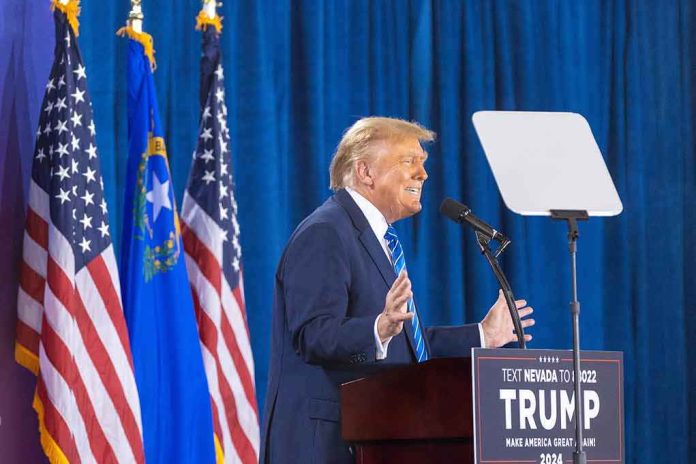
CIA assessment reveals Obama officials Clapper, Brennan, and Comey deliberately orchestrated a false Trump-Russia narrative to undermine the legitimacy of President Trump’s election victory.
Key Takeaways
- A new CIA assessment exposes how the Obama administration manipulated intelligence processes to frame Trump with Russian collusion allegations
- Former DNI John Ratcliffe claims the review reveals how James Clapper, John Brennan, and James Comey orchestrated efforts to undermine Trump’s presidency
- The Intelligence Community Assessment (ICA) was rushed, compartmentalized, and improperly influenced by agency heads before Trump’s inauguration
- The discredited Steele Dossier was mandated for inclusion despite objections, and key intelligence agencies were deliberately excluded from the process
- The assessment suggests these actions were a direct attempt to override the democratic process and the will of American voters
Obama Administration’s Calculated Strategy
A bombshell CIA assessment has uncovered disturbing details about how the Obama administration systematically worked to create and promote the Trump-Russia collusion narrative. “The review details how top intelligence officials took extraordinary and unprecedented steps to shape public perception against President Trump, bypassing normal intelligence protocols,” said John Ratcliffe, Former Director of National Intelligence has been vocal about these findings, stating they expose the truth behind what appears to have been a coordinated effort to delegitimize Trump’s presidency before it even began.
The assessment specifically identifies James Clapper, John Brennan, and James Comey as central figures who took unusual roles in developing the Intelligence Community Assessment following the 2016 election. Instead of allowing standard intelligence processes to unfold, these officials directly involved themselves in ways that violated normal procedures. Their actions created an environment where a predetermined narrative about Russian interference could be established and promoted to both government officials and the American public.
Manipulated Intelligence Processes
“The CIA review identified multiple procedural anomalies that indicate deliberate manipulation of intelligence processes,” said James Clapper. The assessment was conducted on an unusually rushed timeline, with excessive compartmentation that limited oversight and input from qualified analysts. Agency heads maintained abnormal levels of involvement throughout the process, appearing to guide conclusions rather than allowing evidence to determine outcomes. These deviations from standard protocol suggest a predetermined agenda rather than an objective intelligence assessment.
Perhaps most concerning, the review found that key intelligence agencies were specifically excluded from participation in the assessment. This selective approach to which agencies could contribute ensured that only those likely to support the desired narrative were included. Additionally, the timing of the assessment’s publication—rushed to completion before President Trump’s inauguration—strongly suggests political motives rather than national security concerns. This haste prevented proper vetting and analysis that would typically accompany such significant intelligence work.
The Steele Dossier Connection
The CIA assessment reveals that John Brennan personally directed the compilation of the Intelligence Community Assessment, taking the unusual step of mandating the inclusion of the now-discredited Steele Dossier. This occurred despite objections from intelligence professionals who questioned its reliability and sources. The dossier, which contained salacious and unverified claims about Trump, was later revealed to have been partially funded by the Clinton campaign and contained significant misinformation from Russian sources.
“Media leaks orchestrated during this period appear to have been designed to influence both public opinion and intelligence analysts themselves,” said John Brennan. By creating an echo chamber of allegations, these leaks established a circular reasoning pattern where media reports based on selective intelligence leaks were then cited as corroborating evidence for the very claims being investigated. This self-reinforcing cycle helped cement the Russian collusion narrative in public discourse despite its increasingly questionable foundations.
Undermining Democratic Processes
Ratcliffe’s interpretation of the CIA assessment presents a disturbing conclusion: that President Obama, Comey, Clapper, and Brennan deliberately orchestrated a plan to undermine the legitimacy of President Trump’s election victory and handicap his administration from the start. This represents not merely political opposition but potentially an abuse of intelligence agencies and processes for partisan purposes. The implications of such actions, if proven, extend beyond normal political disagreements to questions about the integrity of democratic institutions.
The assessment raises serious legal questions about whether these actions constituted improper or even illegal manipulation of intelligence to target a sitting president. By rushing the assessment before Trump could appoint his own intelligence officials, the Obama administration effectively cemented a narrative that would plague the Trump presidency for years. The consequences of these actions extended far beyond normal transition politics, fundamentally altering public perception and governmental function throughout President Trump’s first term.
Path Forward and Accountability
The revelation of this CIA assessment opens critical questions about accountability for those involved in what appears to be a coordinated effort to use intelligence agencies against a political opponent. The findings suggest that what was presented to the American people as objective intelligence analysis was actually a carefully crafted political weapon. This raises profound concerns about the politicization of intelligence and the potential for similar abuses in the future if those responsible face no consequences for their actions.
President Trump’s administration now has the opportunity to pursue further investigations into these revelations and determine appropriate accountability measures. The CIA assessment provides a foundation for examining not only what occurred during the transition period but also how the Russian collusion narrative was perpetuated throughout subsequent years despite mounting evidence against its validity. Restoring trust in intelligence institutions will require transparency about past abuses and safeguards to prevent similar manipulation in the future.





